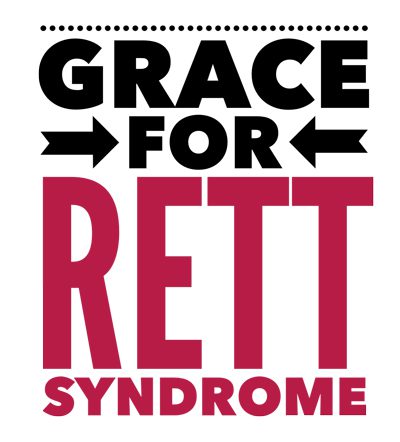Note: I will be referencing The Rett Syndrome Handbook in this post. I highly recommend every Rett family to have this book in their home. It’s a whopping 500+ pages long, written by the amazing Kathy Hunter, founder of IRSF which has now put $40,000,000 into research to cure/treat Rett syndrome. This book has been really valuable when doctors claim that such-and-such isn’t related to Rett and I can pull out this bible of Rett and resolve the issue. If you want a hard-copy, purchase it by emailing admin
“Just breathe, Baby!” I must say it to Grace every day. And when I do, I think ‘why am I saying this? If she could, she would!’
Breathing problems are one of the mysteries of Rett syndrome. But understanding more about it can help you get a grip when the going’s tough.
Breathing difficulties in Rett come in these categories (descriptions taken from the handbook):
Shallow breathing – Most girls with RS have shallow breathing. The lack of deep breathing often puts the bottom of the lungs at high risk for collapse. This is one reason why some girls catch colds very easily and often develop pneumonia. Shallow breathing can be a hinderance during surgery and can lead to fever during recovery.
Hyperventilation – The most striking breathing pattern often noticed by parents are periods of overbreathing with fast, deep breath. Such hyperventilations are often inturrupted by cessation (stopping) of breathing, known as apnea. When your daughter breathes in this way, she may seem agitated with increased hand movements, dilated pupils, increased heart rate, rocking body movements and increased muscle tone. Deep breathing expels more carbon dioxide from the body than usual, so her hyperventilation causes her carbon dioxide levels to fall. Carbon dioxide is one of the body’s normal waste products carried in the blood. Its purpose is to maintain acid/alkali balance so that cells can function normally. When levels are low, you cannot function normally. Hyperventilation may cause your daughter to feel dizzy and her fingers to tingle.
Breath holding – Oxygen saturation in the blood, normally 97% and higher, can be greatly reduced by breath holding. Sometimes as low as 50%, this may cause her to feel faint.
Air swallowing – Air swallowing is called aerophagia. Most people swallow small amounts of air routinely when they are under stress or eat rapidly, swallow unchewed food or chew gum. Swallowing air during discomfort such as heartburn may bring relief. For most people, this isn’t a problem but many girls with RS swallow excessive amounts of air during breath holding which results in abdominal distention. Which means their tummies become very bloated and hard. Air swallowing can be difficult to detect. Here are some signs and symptoms associated with air swallowing:
- audible swallowing any time, including sleep
- severe dysfunction of swallowing, with air swallowing apparent while eating or drinking
- abdominal distention, usually following feedings or episodes of hyperventilation and breath holding
- frequent burping (may be beneficial)
- large amounts of gas passed through the rectum
Apnea – Apnea occurs when she lets a breath out and fails to take another. Not to be confused with breath holding. This often occurs in girls with RS when they are awake. It usually doesn’t cause serious problems. When she isn’t breathing, her oxygen levels fall. Her lips may turn blue and she may lose consciousness briefly. This is dangerous when oxygen levels fall low enough to a level known as anoxia. This is typically not seen in Rett.
The handbook says this about breathing problems:
“Breathing irregularities may be pronounced, or in some cases so subtle that they are not even noticed by parents. Breathing is usually abnormal during wakefulness and tends to be normal during sleep. However, because the girls are often awake at night, the breath holding episodes may be mistaken for sleep apnea. Breathing becomes more irregular under emotional or physical stress.”
The handbook says of the cause:
“It appears these abnormalities result from poor coordination of voluntary control of breathing with the respiratory center of the brain stem.”
So you can see why I swear by this handbook! Now, it’s not difficult to imagine what your daughter feels like when she has these problems because you can mimic them yourself. For instance, force yourself to hyperventilate for 10-20 seconds. Once you pick yourself up off the floor, come finish reading. It’s crazy, right? I do it once in a while just to remind myself how Grace is feeling and I can tell you this: it’s dizzying and really distressing. Can you imagine your body forcing you to do it against your own will?
This is how I think of these breathing problems: it isn’t Grace doing it. It’s her body doing it to her.
I don’t think it feels like she’s holding her breath. I imagine it feels like someone has their hand over her mouth. She doesn’t get to choose to start breathing again. She’s gotta take it until her brain gets back on track.
Breathing problems are often misdiagnosed as other things. For instance, the handbook has this to say about seizures:
“Abnormal breathing episodes can resemble epileptic seizures, but they are not. Sometimes, what is thought to be a seizure is not, and some seizures may fail to be recognized when she is asleep or even awake. Vacant spells are brief interruptions of awareness that may resemble seizures but are not.”
Before a week-long video telemetry study which confirmed seizures, I wondered if what had been diagnosed as seizures in Grace was actually just the behavior you’d expect if someone was stopping her from breathing. I mean, how would you feel if your brain had its hand over your mouth?
Please share what you know about Rett and breathing in the comments below!





